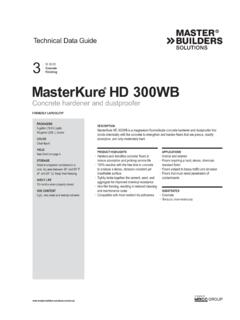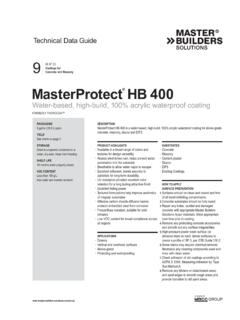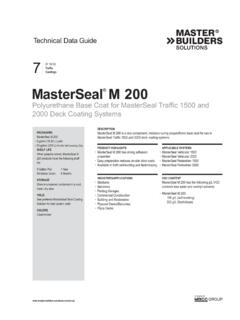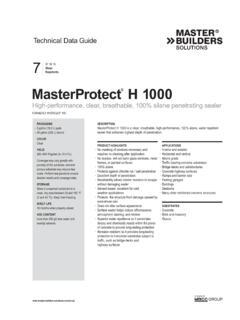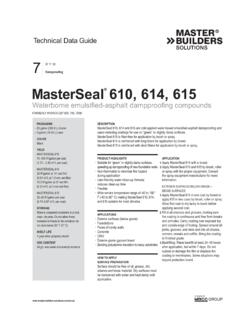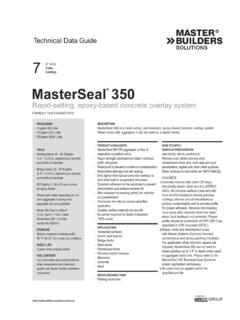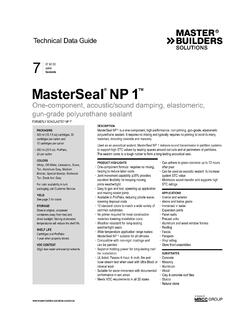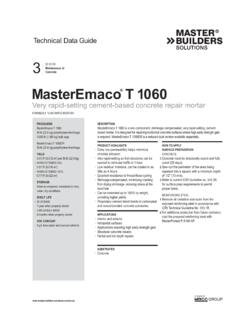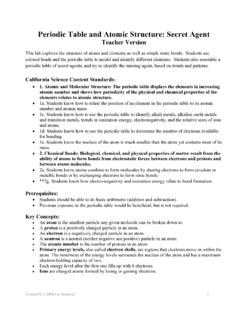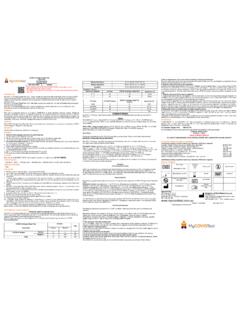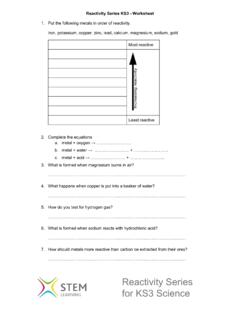Transcription of Alkali-Silica Reactivity (ASR) Testing (ASTM C1260 / ASTM ...
1 Alkali-Silica Reactivity (ASR) Testing ( astm C1260 / astm C1567) astm C1260 , Standard Test Method for Potential Alkali Reactivity of Aggregates (Mortar-Bar Method) and astm C1567, Standard Test Method for Determining the Potential Alkali-Silica Reactivity of Combinations of Cementitious Materials and Aggregate (Accelerated Mortar-Bar Method) What is Alkali Silica Reactivity (ASR) Testing of aggregates? An accelerated mortar bar test method used to detect the potential deleterious alkali Reactivity of an aggregate do you evaluate an aggregate s potential for deleterious expansion? For both astm C1260 and astm C1567, the aggregate source is processed to a prescribed gradation. Straight portland cement is used in astm C1260 whereas a combination of portland cement and the SCM under evaluation make up the cementitious materials package in astm C1567.
2 Specially prepared mortar beam specimens are placed in a high alkaline solution bath at a temperature of 80 C (176 F) for a period of 14 days. The length is measured over time and the potential Reactivity is determined based on the level of expansion. In astm C1260 , the aggregate is considered potentially innocuous if, at 16 days after casting, the length change is less than percent and potentially reactive if the length change is greater than percent. If the length change is between and percent, supplementary information including petrographic examination will be required to determine if the expansion is due to ASR. By contrast, in astm C1567, combinations of portland cement and SCM and aggregate that expand less than percent at 16 days after casting are likely to have a low risk of deleterious expansion when used in concrete under field conditions.
3 However, expansions greater than percent are indicative of potentially deleterious expansion. Irrespective of which method is used and time permitting, the potential for deleterious expansion should be confirmed using astm C1293, Standard Test Method for Determination of Length Change of Concrete Due to Alkali Silica Reaction. What are the concerns about ASR on durability and serviceability? The expansive gel formed due to ASR will increase in volume when exposed to moisture and cause extensive random map cracking within the concrete matrix, thereby shortening the service life of the structure or element. The resulting cracking can also accelerate other concrete deterioration processes such as freeze-thaw damage and corrosion of embedded reinforcement due to chloride should I be concerned about ASR?
4 With the depletion of good aggregate sources, more and more states are reporting incidences of ASR and it has become a growing concern throughout North is this standard used in the industry? Specifications requiring data submittals and mitigating solutions to deal with ASR are increasing so concrete producers need to better understand the potential Reactivity of their aggregates. In most cases, it is not cost effective to bring in an alternate aggregate to address an ASR issue. However, lithium-based admixtures and supplementary cementitious materials, such as Class F fly ash, slag cement, and metakaolin, can be used, either singularly or synergistically, to cost-effectively mitigate ASR. To determine the dosage of lithium-based admixture needed to mitigate ASR for a given aggregate, the high alkaline soak solution used in the astm C1260 or astm C1567 test has to be buffered with a calculated amount of lithium ions to prevent leaching of the admixture from the mortar Builders Solutions Admixtures US, LLC23700 Chagrin BoulevardCleveland, Ohio 44122-5544 Tele (800) 628-9990 Master Builders Solutions Canada, Clark BoulevardBrampton, Ontario L6T 4M7 Tele (800) 387-5862
